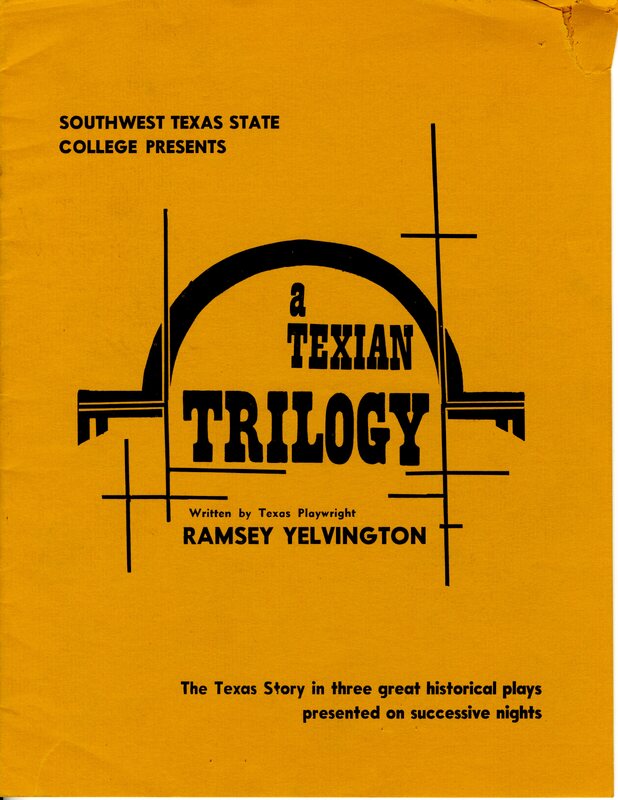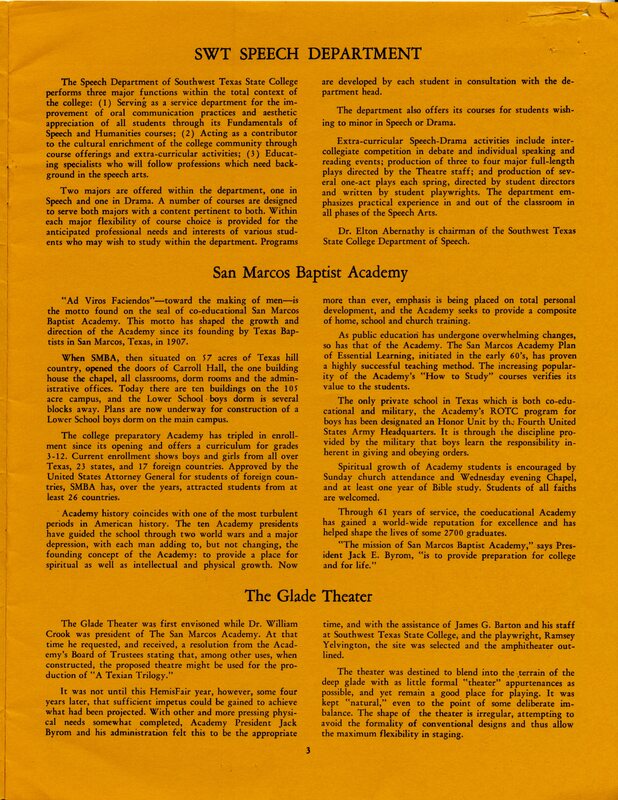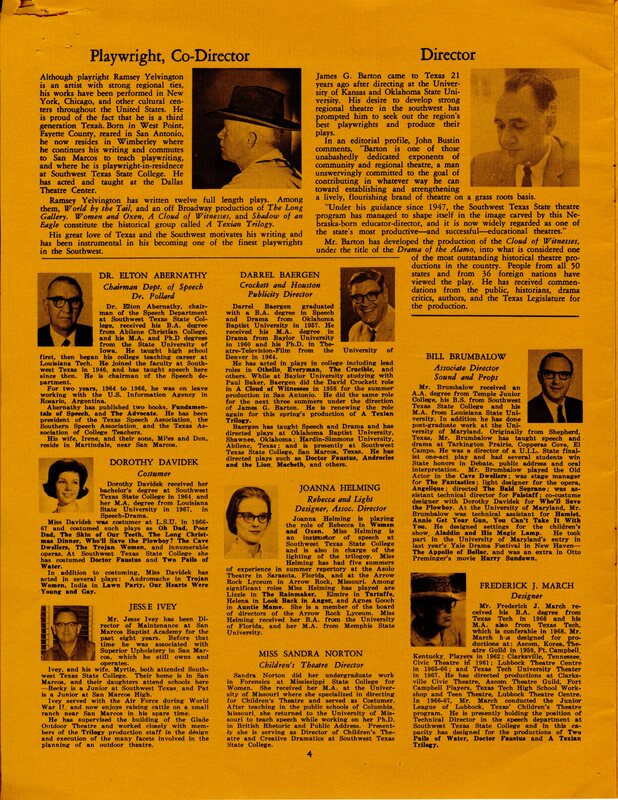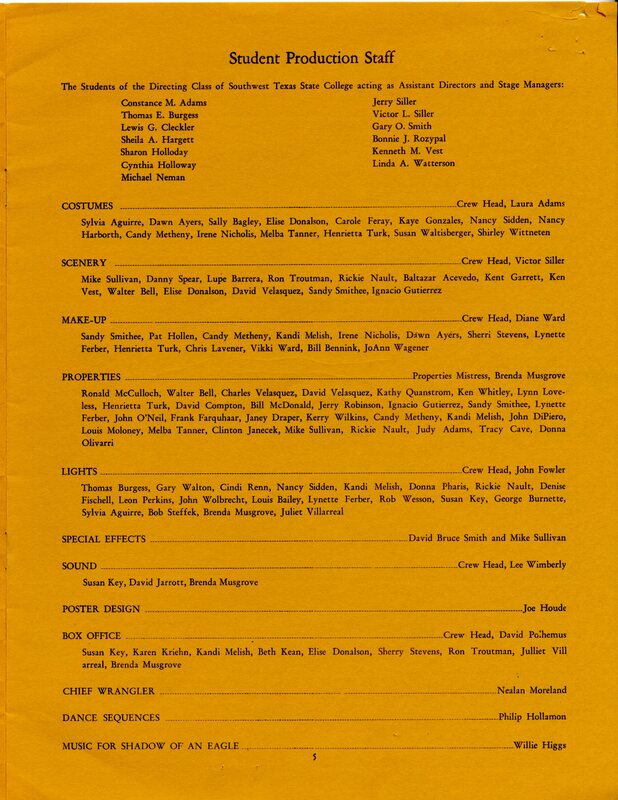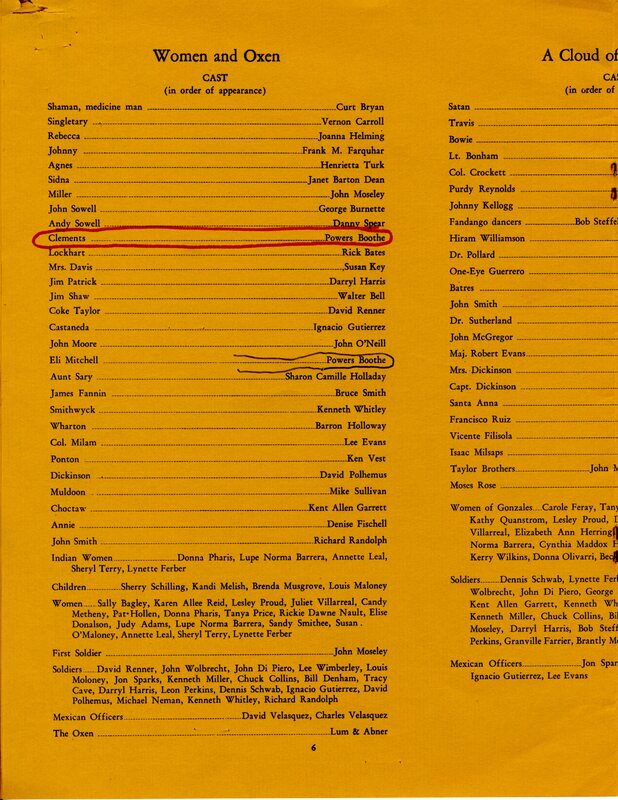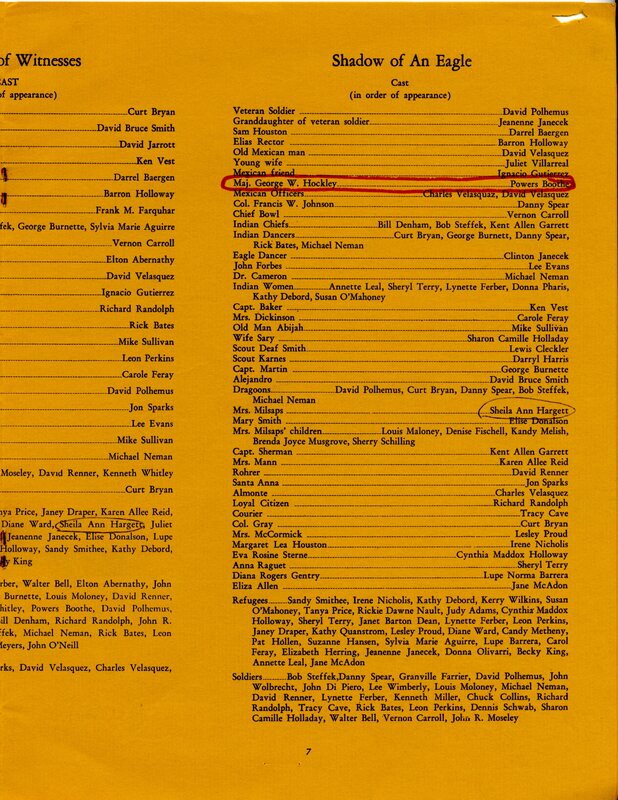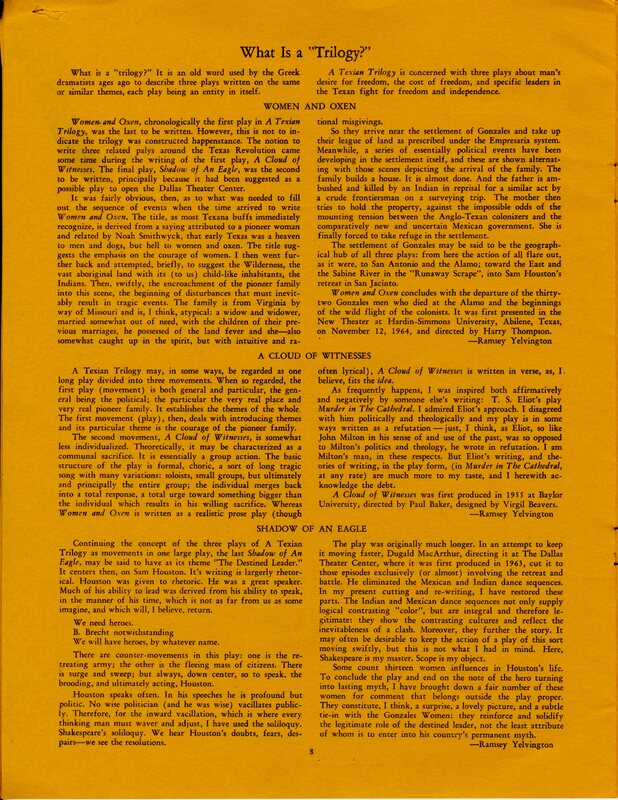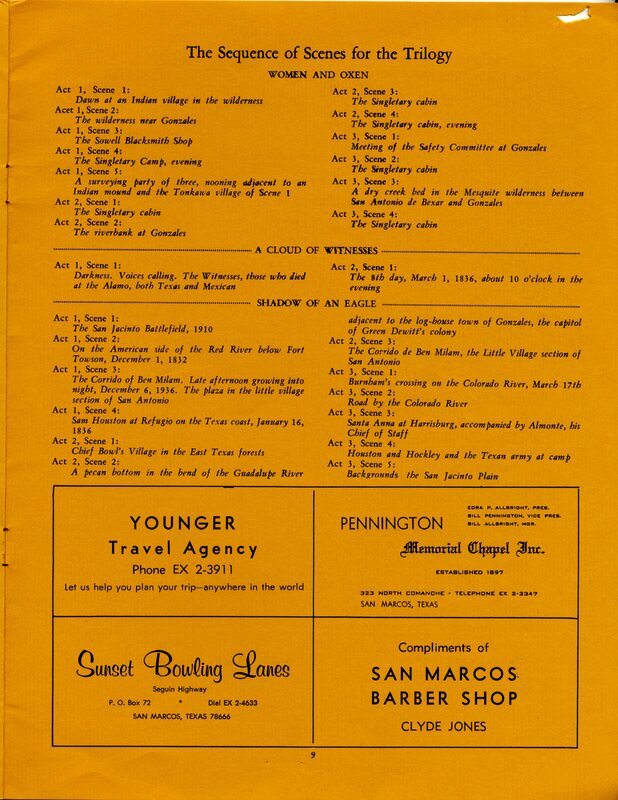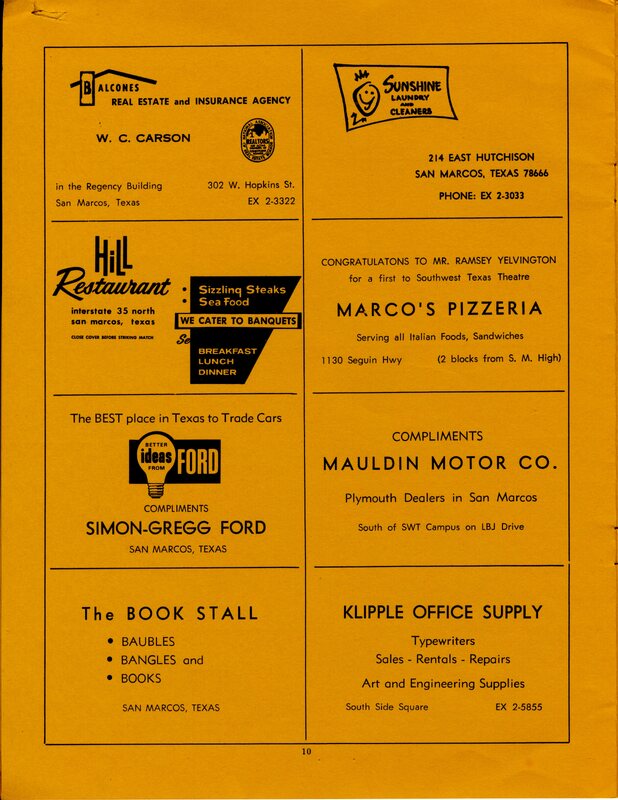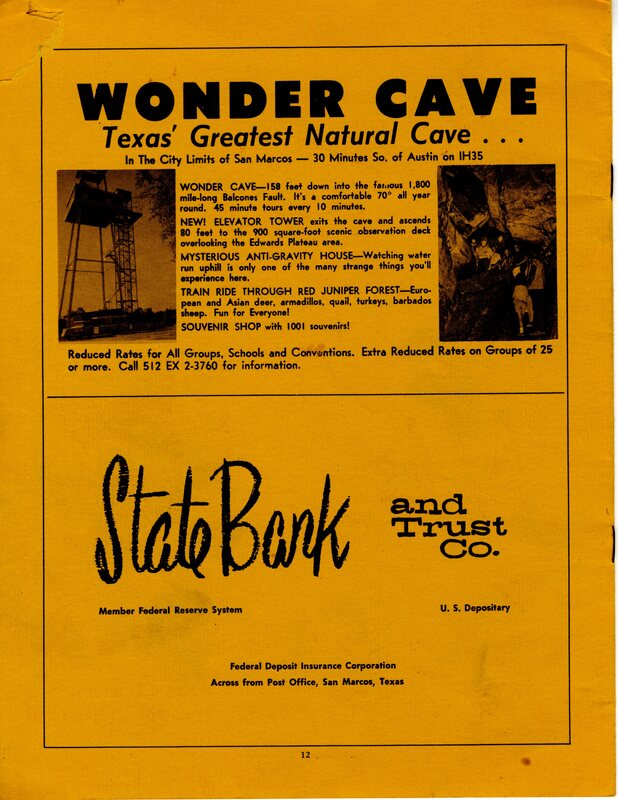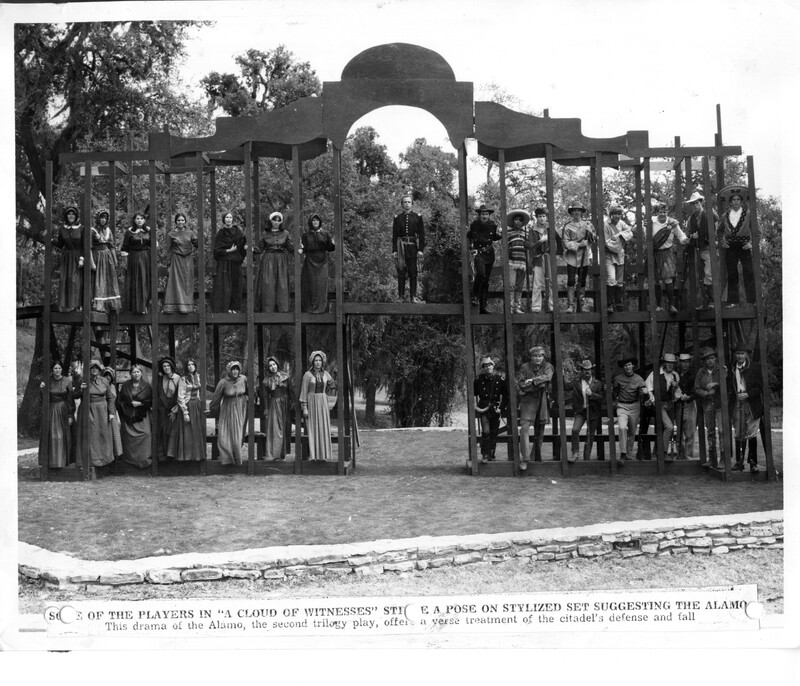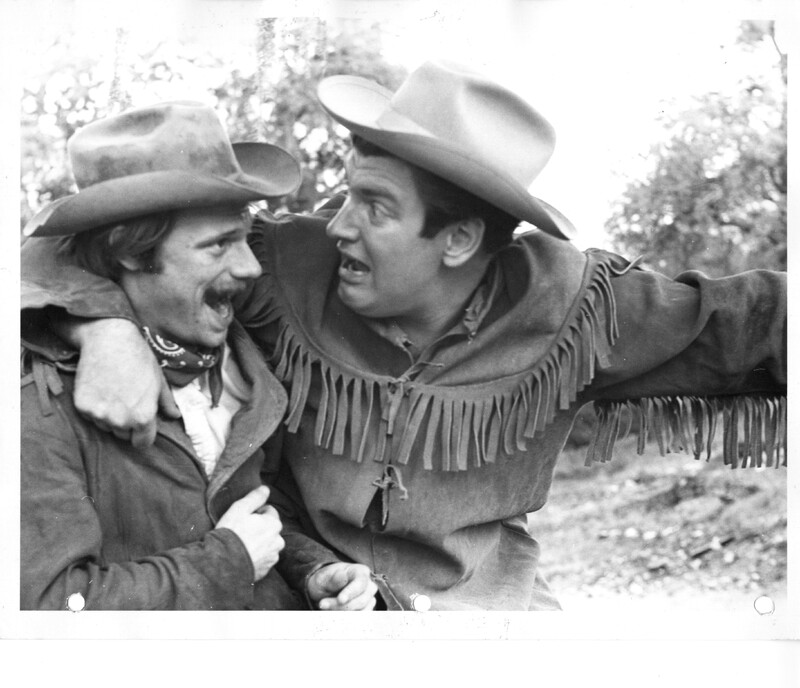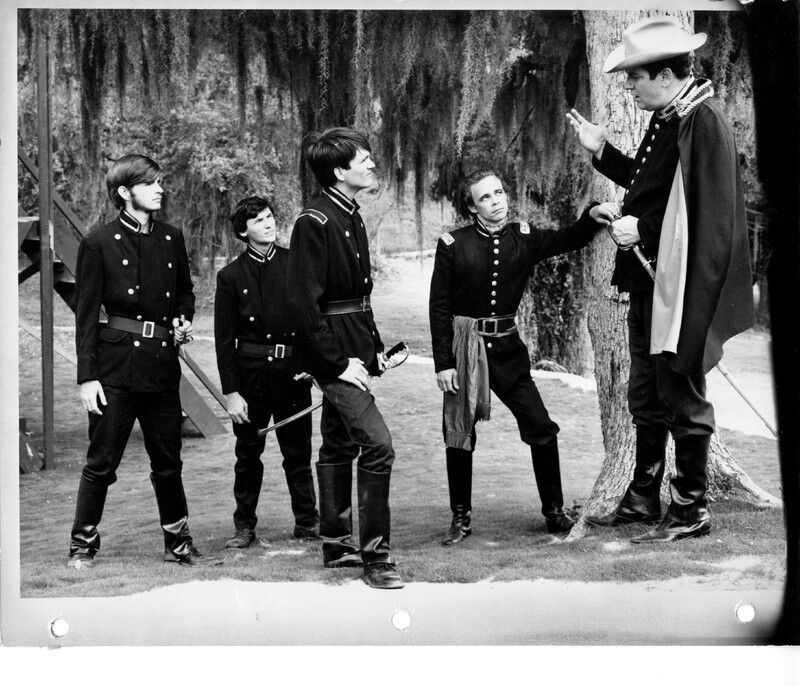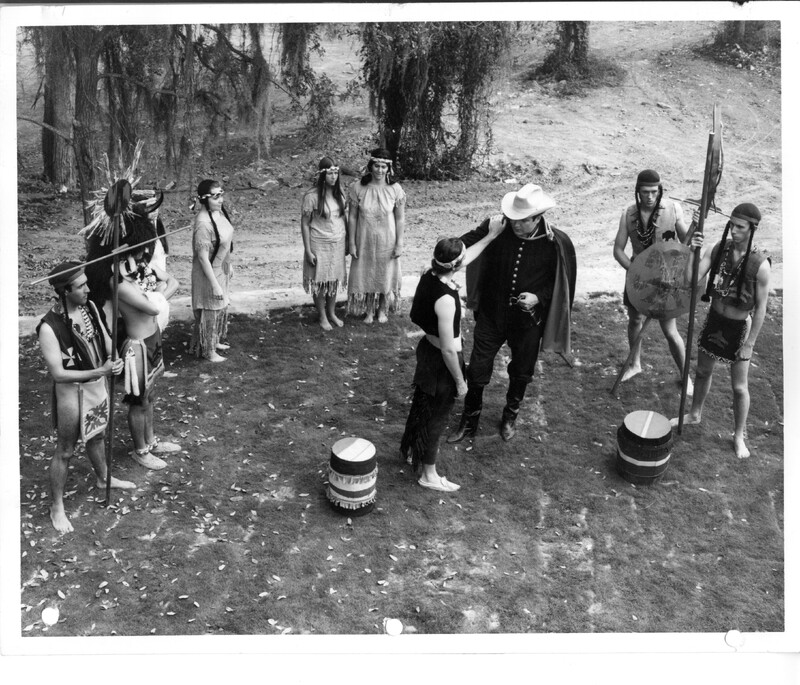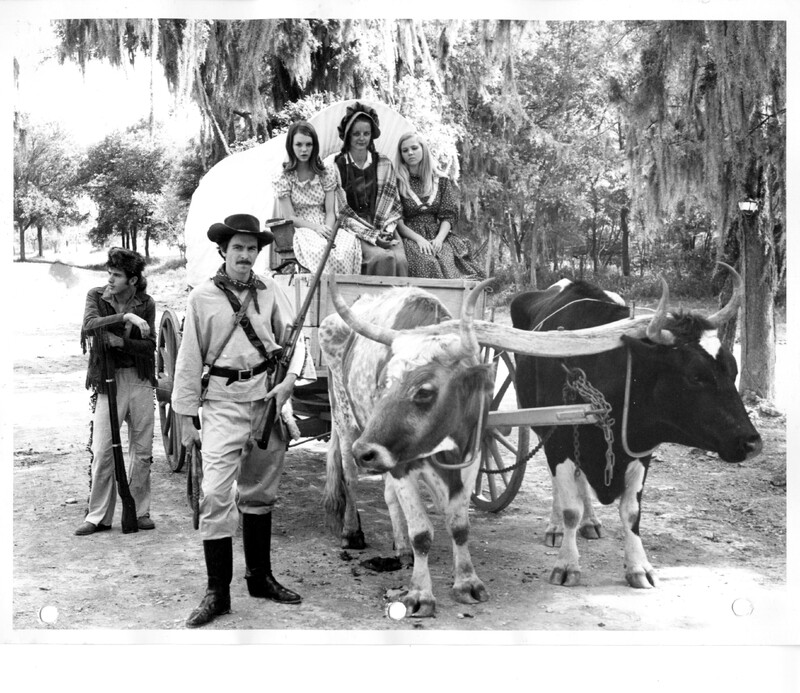The Texian Trilogy
The Texian Trilogy is a series of plays written by Ramsey Yelvington, initially performed as separate entities but thematically connected. The central motif of the plays is freedom and the sacrifices necessary to attain it. Yelvington himself described the trilogy as one long play divided into "movements." These plays feature legendary figures from Texas's history. The trilogy comprises "Women and Oxen," narrating a family's migration to and settlement in Gonzales; "A Cloud of Witnesses: The Drama of The Alamo," depicting the communal sacrifice for freedom at the Alamo; and "Shadow of an Eagle," portraying Sam Houston's story and the Battle of San Jacinto. Premiered separately, "A Cloud of Witnesses" debuted in 1955 at Baylor University, "Shadow of An Eagle" in 1963 at The Dallas Theater Center, and "Women and Oxen" in 1964 at Hardin-Simmons University. The production was awarded a $1,500 grant from the Texas Fine Arts Commission due to it's cultural and historical signifigance.
For the Texian Trilogy, James G. Barton issued an open casting call, inviting citizens of San Marcos to audition alongside theater students for the numerous roles, totaling over 150 characters. Barton aimed to limit the acting cast to approximately 80 individuals, with many playing multiple roles across the trilogy. To stage the production, props were essential, and donations were sought, particularly for authentic worn-out items such as old farm equipment, blacksmithing tools, cedar posts, and even a pair of oxen and a covered wagon.
The Texian Trilogy was presented in a rotating repertory theater style at the Glade Theatre, purpose-built for its premiere. The performances spanned multiple dates in 1968, from April 8th to 13th and April 25th to 27th, coinciding with the Southwest Texas State University's Fine Arts Festival. Additionally, the trilogy ran in May on the 2nd, 3rd, and 4th, and the 9th, 10th, and 11th. The initial premiere of The Texian Trilogy had issues with intermittent rain during the performance but was ultimately a success, with the shows proceeding as scheduled. Following its scheduled performances, the first play in the series, Women and Oxen, was selected to run for an additional six weeks through the summer, but had issues with low audience attendance.
